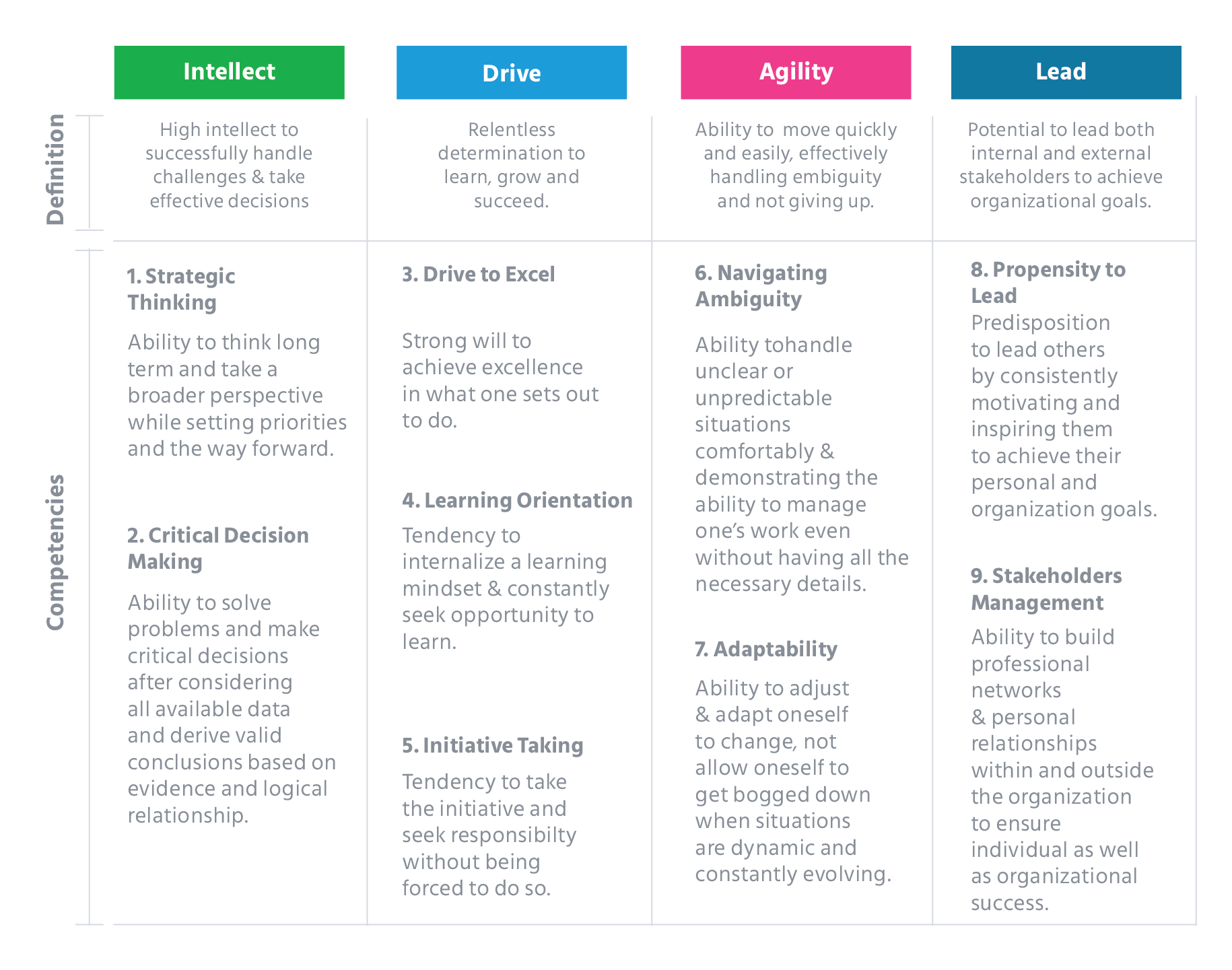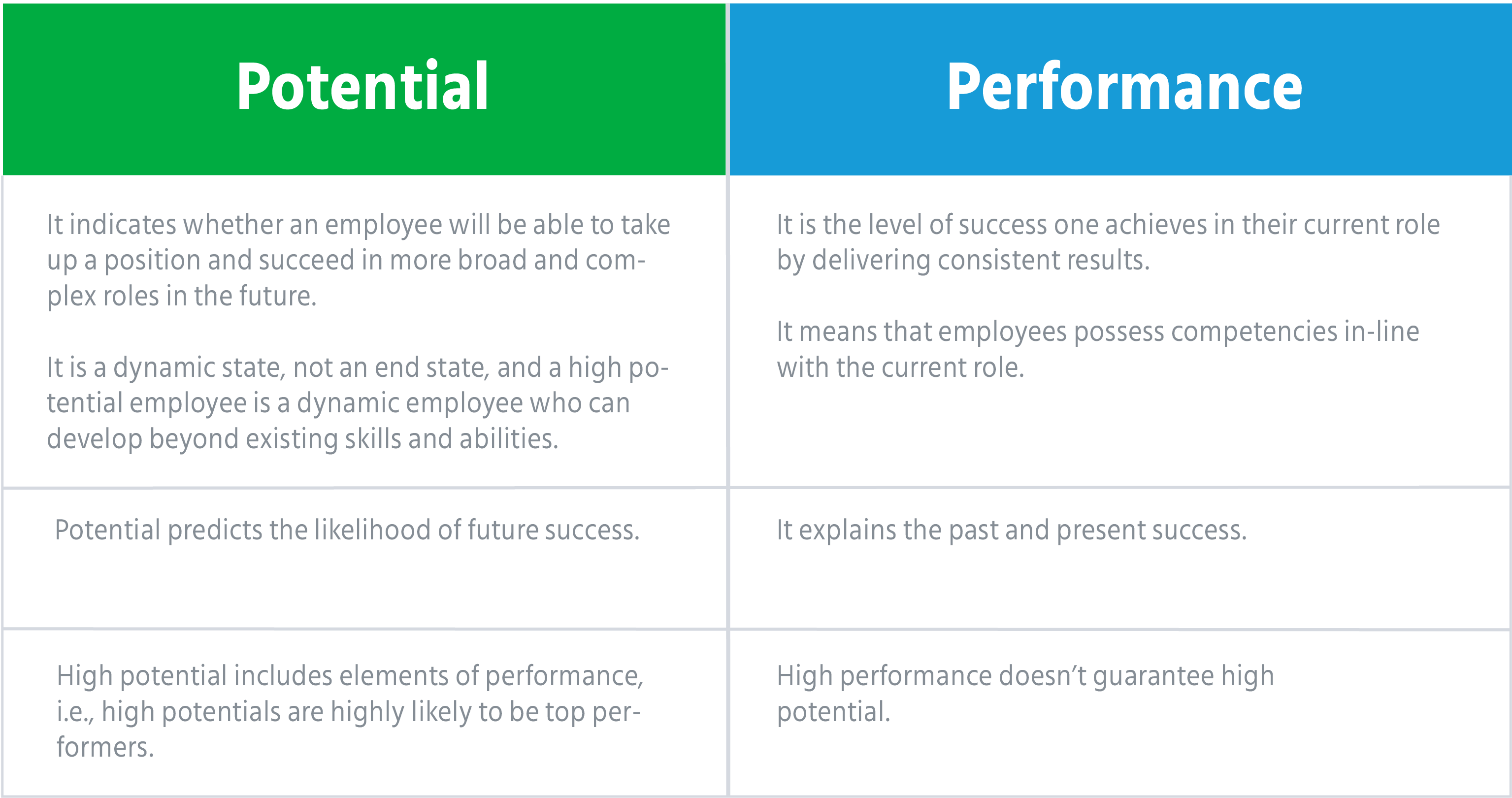High-potential employees possess higher intellect, relentless drive, agility, adaptability, and an orientation to lead. They develop themselves to handle broader and complex future work challenges, responsibilities and become successful leaders in the future. They not only create value for the company but often act as a catalyst in the process of shaping up the organization’s future. These factors help to distinguish HiPos from the rest of the workforce clearly. They indicate that it is not the current job performance that sets employees apart but the potential to grow and succeed quickly in future roles.
High-potential employees are part of a larger talent pool, who can be identified and developed based on the need and strategy of the organization. High-potential employees are considerably more critical to the organization.
The key indicators of HiPos are:

Intellect
Intellect is defined as the ability to think long-term, handle complex challenges, and make effective decisions. It also signifies the ability to think strategically and manage long-term goals. As one climbs up the corporate hierarchy, one’s role evolves from being an individual problem-solver to that of a strategic thinker. Individuals who cannot shift their focus from immediate problem solving to thinking long-term, are most likely to struggle in their future roles. Thus, the ability to understand the dynamic internal and external environment and consider the long-term impact of one’s actions and decisions are essential for a HiPo employee. The ability to think analytically, spotting a pattern or trend in a complicated situation, and making effective decisions quickly are the distinguishing features of a HiPo employee.
Drive
Usually driven by strong will and motivation to achieve more, HiPos work earnestly to achieve goals and are determined to attain results at all cost. They display higher aspirations to take challenging positions to prove themselves. HiPos usually flourish if they are given challenging targets to meet, coupled with the proper support to achieve them. They are also committed to taking initiatives, learning new skills, and are always seeking opportunities to excel.
Agility
The ability to quickly read a tricky situation and navigate through it smoothly are some of the defining features of a HiPo employee. HiPos hold a positive outlook toward dynamic changes. Their ability to move quickly and easily across roles and locations, making meaning out of ambiguous situations, and comfortably adapting to change are some of the core characteristics of a HiPo employee.
The Propensity to Lead
It is often considered risky to include people who don’t possess the potential to lead in a HiPo program. To flourish in future roles, leadership skills such as motivating and inspiring others, influencing and guiding team members, become critical. The ability to build trust, credibility, and confidence among team members is an essential trait to succeed in future roles. HiPos are typically people with strong networking skills and are well connected with both internal and external stakeholders.
Mercer | Mettl’s Scientific Framework For Identification of HiPos










 Behavioral Competencies
Behavioral Competencies Cognitive Competencies
Cognitive Competencies Coding Competencies
Coding Competencies Domain Competencies
Domain Competencies






























Would you like to comment?